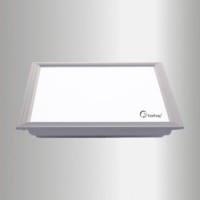Product Name: 3.2V 105ah LiFePO4 Lithium Battery for 12V 24V 36V Solar Energy Storage Boat RV Battery Pack DIY Vehicle 3c Discharge Cell Model NO.: LFP105Ah Rechargeable: Chargeable Installation: Packaged Electrolyte: Li-ion Shape: Square Battery Discharge Rate: High Discharge Rate Nominal Voltage: 4V Usage: Car, Bus, UPS, Electric Power, Lighting, Electric Bicycle, Boat Type: Lithium-Ion Batteries Trademark: OEM Transport Package: Carton Specification: 50Ah Origin: China HS Code: 8541402000 Product Description Product Name:Prismatic Aluminum-clad LiFePO4 Lithium Ion BatteryProduct Model:LF105Nominal Technical ParameterNo.ItemParameterRemark1Nominal capacity105Ah(25±2)ºC, Standard charge/discharge.2Nominal voltage3.2V3AC Impedance resistance (1KHz)≤0.5mΩ4Standard charge/dischargeCurrent ofcharge/discharge0.5C/0.5C(25±2)ºCCut-off voltage ofcharge/discharge3.65V/2.5V5Maximum current of charge/dischargeConstant charge/discharge1C/1CRefer to constant/pulse charge or discharge MAPPulsecharge/discharge (30s)1C/3C6Recommend SOC window10%~90%N.A.7Charge temperature0ºC~55ºCRefer to constant/pulse charge or discharge MAP8Discharge temperature-20ºC~55ºC9Storage temperature1 month-20ºC~45ºCN.A.1 year0ºC~35ºC10Storage humidity<95%No.ItemParameterRemark11Self-discharge rate per month≤3%/permonth(25±2)ºC,30%~50%SOCstorage12SizeWidth130.3±0.3mmRefer to appendix 113Thickness(30%-40%SOC)36.7±0.5mm14Height (total)200.5±0.5mm15Height (subject)195.5±0.5mm16Tabs distance67.0±1.0mm17Weight1980±100gTest ConditionsTest Environment Temperature:(25±2)°C Relative humidity:15%~90%Atmospheric pressure:86KPa~106KPaStandard ChargeAt (25±2)ºC, the cell is charged by a constant current of 0.5C (A) to the cut-off voltage 3.65V, then kept at this voltage untill the current is less than 0.05C (A).Standard DischargeAt (25±2)ºC,the cell is discharged by a constant current of 0.5C (A) to the cut-off voltage 2.5VElectrical PerformanceNo.ItemRequirementsMeasuring Procedure1Rate dischargeability at 25ºCDischarge capacity / Nominal capacity×100% A) 0.5C(A)≥100%B) 1.0C(A) ≥100%After standard charged, the cell undergo a rest for 1h, then is diacharged by current0.5C(A),1.0C(A) respectively to cut-off voltage 2.5V. This test is allowed to be repeated for 3 times if the discharge capacity fails to meet the technical requirements.2Dischargeability at different temperatureDischarge capacity / Nominal capacity×100% A) 55ºC ≥95%B) -20ºC ≥70%After standard charged, the cell undergo a rest for 5h at (55±2 )ºC, then is diacharged by current 1.0C(A) to cut-off voltage 2.5V;After standard charged, the cell undergo a rest for 24h at (-20±2)ºC, then is diacharged by current 1.0C(A) to cut-offvoltage 2.0V.3Charge retention and recovery at 25ºCresidual capacity ≥ nominal capacity×95% Recovered capacity≥nominal capacity×97%After standard charged,the cell undergo a rest for 28 days, then is diacharged by current 1.0C(A) to cut-off voltage 2.5V. The discharge capacity is called residual capacity. After standard charged again,the cell undergo 30min's rest , then is diacharged by current 1.0C(A) to cut-off voltage 2.5V. The discharge capacity is called recovered capacity.4Cycle life at 25ºC≥3500 cycle @1C/1CAt (25±2)ºC, 300kgf clamp force: the cell is charged by current 1.0C (A) to 3.65V, then kept at this voltage until the current is less than 0.05 C(A), followed by 30min rest, subsequently the cell is diacharged by current 1.0C (A) to 2.5V . Cycle continues until the capacity decays to 80% of the nominal capacity6End-of-life managementDischarge capacity / Nominal capacity <70%The cell shall be stopped using when the life limit is exceeded.Safety PerformanceNo.ItemRequirementsMeasuring Procedure1OverdischargeNo fire,explosion,electrolyte leakageReference: GB/T 31485-2015 safety requirements and test methods for power batteries for electricvehicles2OverchargeNo fire,explosion3ShortcircuitNo fire,explosion4DroppingNo fire,explosion,electrolyte leakage5HeatingNo fire,explosion6CrushingNo fire,explosion7PriskingNo fire,explosion8Seawater immersionNo fire,explosion9Temperature cycleNo fire,explosion,electrolyte leakage10Low pressureNo fire,explosion,electrolyte leakage






























